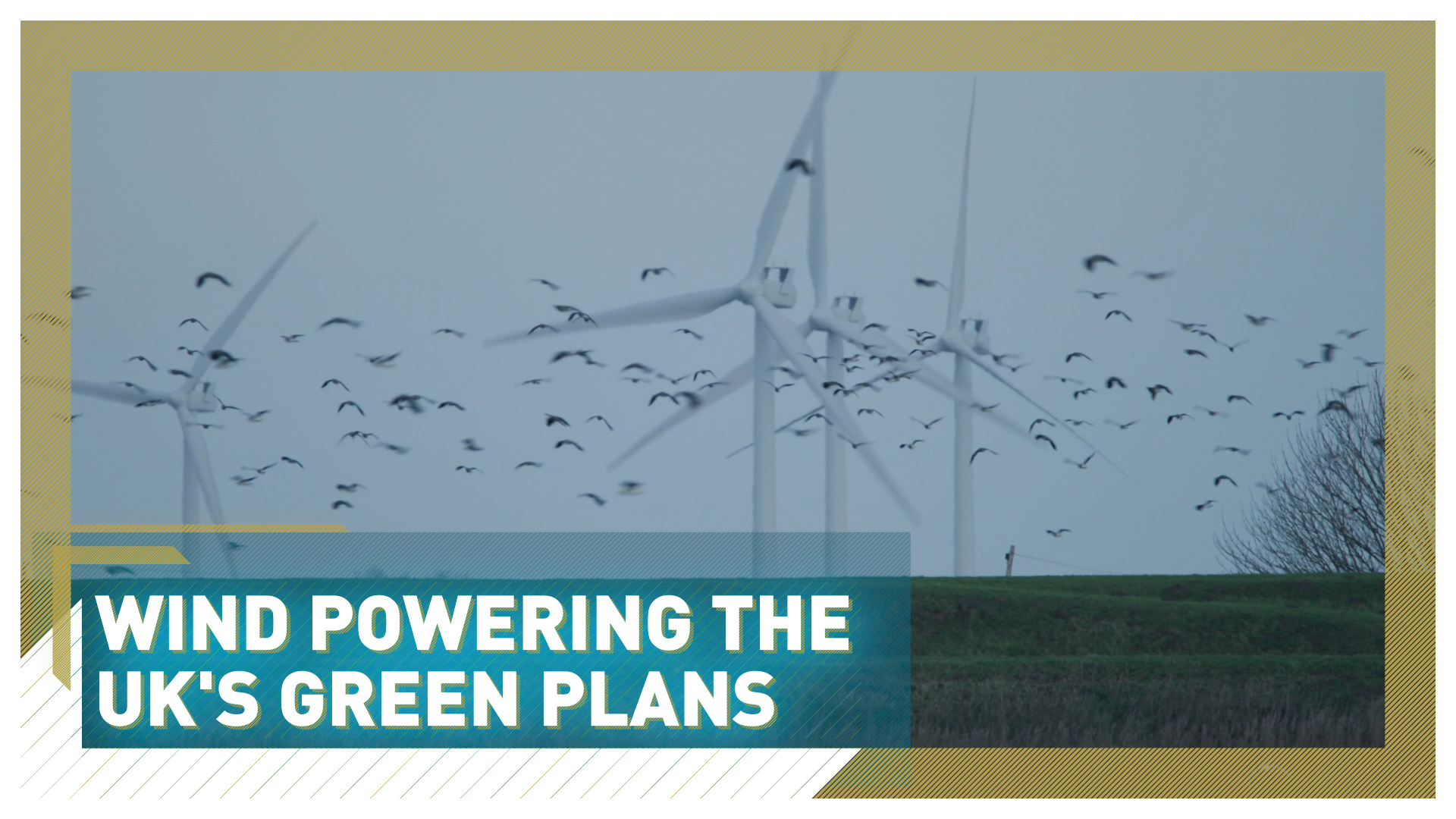02:49

The UK endured a battering from Storm Bella in December, but thanks to increased investment in wind power the gales also generated a record 50.67 percent of electricity in the country.
Britain's coastline already hosts the world's biggest wind farm, Hornsea One, in waters off northeast England. However, by 2022 it will be surpassed in size by a new offshore wind project next to it, Hornsea Two, with both operated by the Danish company Orsted.
"Our ultimate goal is to create a world which runs entirely on green energy," says Patrick Harnett, program director for Hornsea Two.
"Wherever we can build these giga wind farms, these enormous wind farms that we like to build – particularly in the UK, but anywhere around the world – then we will do that wherever we can, in order to fight climate change and also deliver really good value energy to consumers."
With shallow waters and high winds, the UK coastline provides ideal conditions for the wind energy industry. Hornsea Two will be made up of 165 giant wind turbines, each 120 meters tall with blades 85 meters long. The power is transferred into cables along the sea bed and back onto land via an offshore substation.
"The UK is the ninth-largest island in the world so we have a huge amount of water and wind around our shores," said Harnett. "So it makes great sense to build bigger and bigger wind farms and to be able to capture that free energy and transfer it to people's homes and businesses with zero carbon.
"It's a completely green energy source, with no costs to generate. It's 1.4 gigawatts of power – now that's enough for 1.3 million homes."
With growing public acceptance of wind turbines placed on the landscape, there are now around 1,500 smaller-scale onshore wind farms scattered across Britain.
Even a dozen turbines can potentially power a community of homes for a year. And with wind power becoming ever cheaper – costs are down by around two-thirds since 2015 – it is becoming more appealing to the consumer too.

Analyst Jess Ralston has said that government backing has given confidence to investors in wind farms. /CGTN
Analyst Jess Ralston has said that government backing has given confidence to investors in wind farms. /CGTN
Jess Ralston, an analyst for think tank Energy and Climate Intelligence Unit (ECIU), says government support for wind farms has been a game-changer.
"What's really helped the wind sector in the UK is the stable, long-term clear policy that's been set out by the government for this," she said. "It's allowed certainty for investors to start building the supply chains in the UK, to start getting the wind farms in – and it's also helped rapidly reduce costs."
The subsidies support the government's ambitious target of 40 GW of wind power generation by 2030, in a bid to combat climate change, along with net zero carbon emissions by 2050.
"Wind power will be starting to replace dirtier energy sources, such as coal and such as natural gas," said Ralston. "Natural gas is a big producer in our system at the moment, but it will need to be phased out on the course to 2050, if we're going to reach net zero."
However, this requires substantial changes to national infrastructure and homes, many of which are powered by natural gas.
"With wind and with more renewables, we'll need to see more storage, like battery storage. We'll still need to see more flexibility allowed by the system," Ralston admitted. "But once all of these things are in place, I can't see any reason why renewables – and wind in particular – wouldn't just grow and grow."

